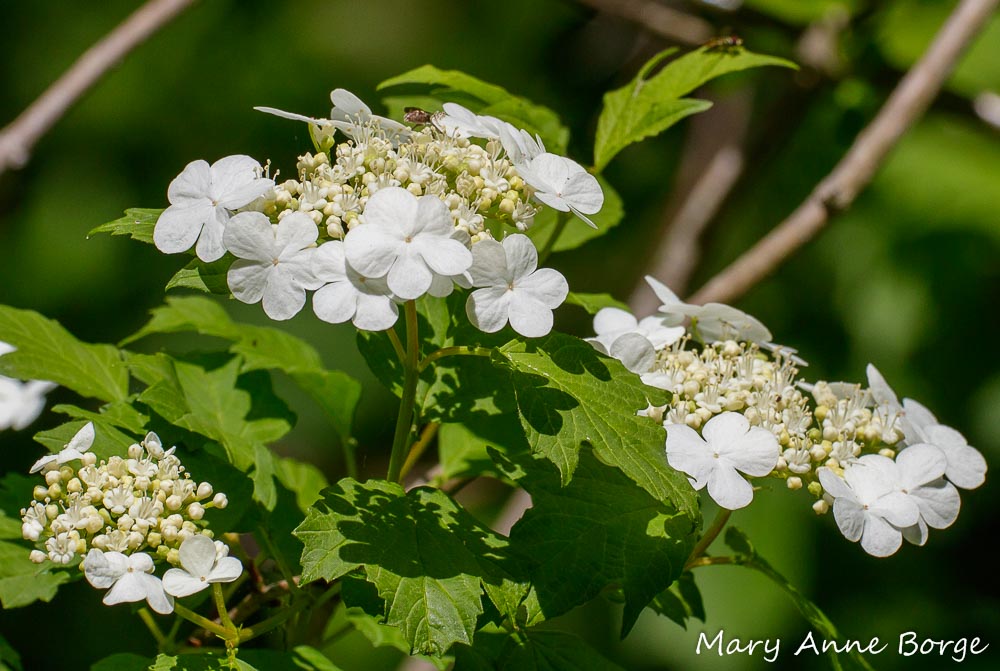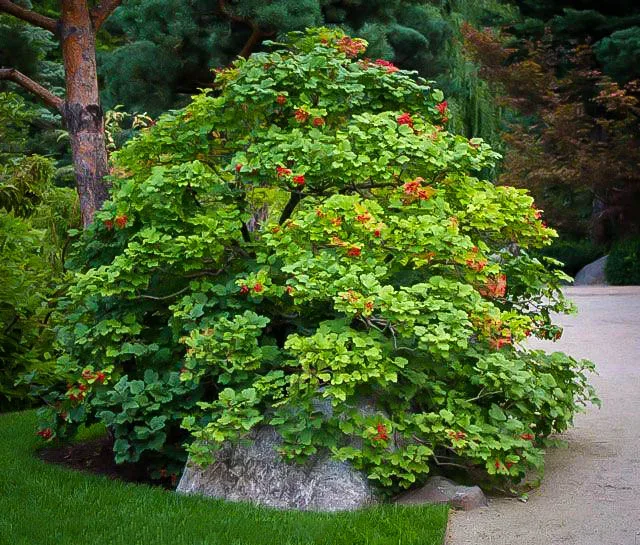The Cranberry Viburnum: A Beautiful And Edible Shrub
The Cranberry Viburnum: A Beautiful and Edible Shrub
The cranberry viburnum (Viburnum trilobum) is a deciduous shrub that is native to North America. It is known for its showy white flowers in the spring and its clusters of edible red berries in the fall. The berries are tart and acidic, but they can be used to make jellies, jams, sauces, and other preserves.
The cranberry viburnum is a hardy plant that can tolerate a wide range of climates. It is also relatively low-maintenance, making it a good choice for both home gardeners and commercial growers.
In addition to its beauty and edible qualities, the cranberry viburnum also provides a number of other benefits. It is a host plant for a variety of butterflies and moths, and it helps to attract birds to the garden. The berries are also a good source of vitamin C and other nutrients.
If you are looking for a beautiful, edible, and low-maintenance shrub for your garden, the cranberry viburnum is a great option.
Here are some additional details about the cranberry viburnum:
- Size: The cranberry viburnum can grow to be 6-10 feet tall and wide.
- Hardiness: The cranberry viburnum is hardy in zones 3-8.
- Sunlight: The cranberry viburnum prefers full sun, but it can also tolerate partial shade.
- Soil: The cranberry viburnum prefers well-drained, loamy soil.
- Watering: The cranberry viburnum needs regular watering, especially during the first year after planting.
- Pruning: The cranberry viburnum does not need to be pruned heavily. However, you can remove dead or diseased branches in the spring.
- Propagation: The cranberry viburnum can be propagated by seed, cuttings, or layering.
Here are some ways to use the cranberry viburnum berries:
- Make jellies, jams, and sauces. The tart flavor of the cranberry viburnum berries makes them a good choice for making jellies, jams, and sauces.
- Add them to baked goods. The cranberry viburnum berries can be added to muffins, pancakes, waffles, and other baked goods.
- Use them in smoothies. The cranberry viburnum berries are a good source of vitamin C and other nutrients, and they can be added to smoothies for a healthy and refreshing snack or meal.
- Dry them and use them as a garnish. The cranberry viburnum berries can be dried and used as a garnish for salads, desserts, and other dishes.
The cranberry viburnum is a beautiful and edible shrub that can add a lot of value to your garden. It is hardy, low-maintenance, and provides a number of benefits. If you are looking for a new shrub to add to your garden, the cranberry viburnum is a great option.
Cranberry viburnum (Viburnum trilobum) is a beautiful shrub that is native to North America. It is known for its clusters of small, red berries, which are edible and have a tart cranberry-like flavor. Cranberry viburnum is also a popular ornamental shrub, as it has attractive white flowers in the spring and fall foliage that turns shades of red and orange.
If you are interested in learning more about cranberry viburnum, I recommend visiting the Garden Wiki. This website has a wealth of information about the plant, including its history, cultivation, and uses. You can also find photos and videos of cranberry viburnum, as well as a forum where you can ask questions and connect with other cranberry viburnum enthusiasts.
FAQ of cranberry viburnum
- What are the best conditions for growing cranberry viburnum?
Cranberry viburnum is a hardy shrub that can grow in a variety of conditions, but it prefers moist, well-drained soil and full sun to partial shade. It can tolerate some drought, but it will not thrive in dry soil. Cranberry viburnum is also tolerant of a wide range of pH levels, but it prefers slightly acidic soil.
- How do I propagate cranberry viburnum?
Cranberry viburnum can be propagated by seed, but the process is labor-intensive. A more reliable method is to take softwood cuttings in the summer. To do this, cut a 6-inch piece of stem from a healthy plant. Remove the leaves from the bottom half of the cutting and dip the cut end in rooting hormone. Plant the cutting in a pot of moist potting mix and place it in a shady spot. Keep the soil moist and the cutting should root in about 6-8 weeks.
- How do I care for cranberry viburnum?
Cranberry viburnum is a relatively low-maintenance shrub. It only needs to be watered deeply once a week during the summer months. In the spring, you can fertilize the plant with a balanced fertilizer. Cranberry viburnum does not need to be pruned often, but you can remove dead or damaged branches in the winter.
- What are some common pests and diseases of cranberry viburnum?
Cranberry viburnum is susceptible to a few pests and diseases, but they are not usually serious. Some common pests include aphids, scale insects, and Japanese beetles. These pests can be controlled with insecticidal soap or neem oil. Cranberry viburnum is also susceptible to powdery mildew and leaf spot. These diseases can be prevented by watering the plant at the base and avoiding overhead watering. If the plant does develop a disease, you can treat it with a fungicide.
- How long does cranberry viburnum live?
Cranberry viburnum can live for 20-30 years or more. It is a relatively long-lived shrub that can provide beauty and interest to your garden for many years to come.
Image of cranberry viburnum
5 different images of "cranberry viburnum" from Pinterest:
- Image 1: A close-up of a cranberry viburnum flower cluster. The flowers are white with a hint of pink and have a star-like shape.

- Image 2: A full shot of a cranberry viburnum shrub in bloom. The shrub is covered in white flowers and has a lush, green foliage.
- Image 3: A cranberry viburnum shrub in fall. The leaves of the shrub have turned a deep red color and the berries are starting to ripen.

- Image 4: A cranberry viburnum berry close-up. The berries are a bright red color and have a slightly tart taste.

- Image 5: A group of cranberry viburnum shrubs in a garden setting. The shrubs are planted in a row and are surrounded by other flowering plants.

Post a Comment for "The Cranberry Viburnum: A Beautiful And Edible Shrub"